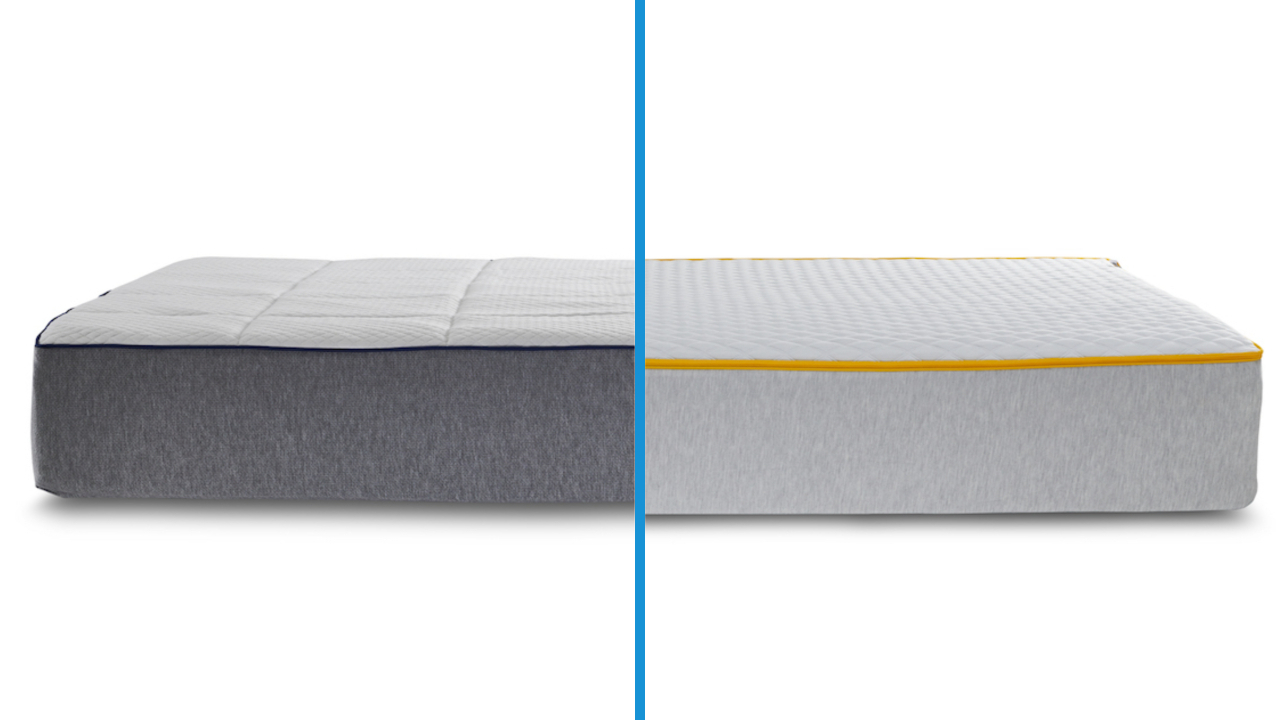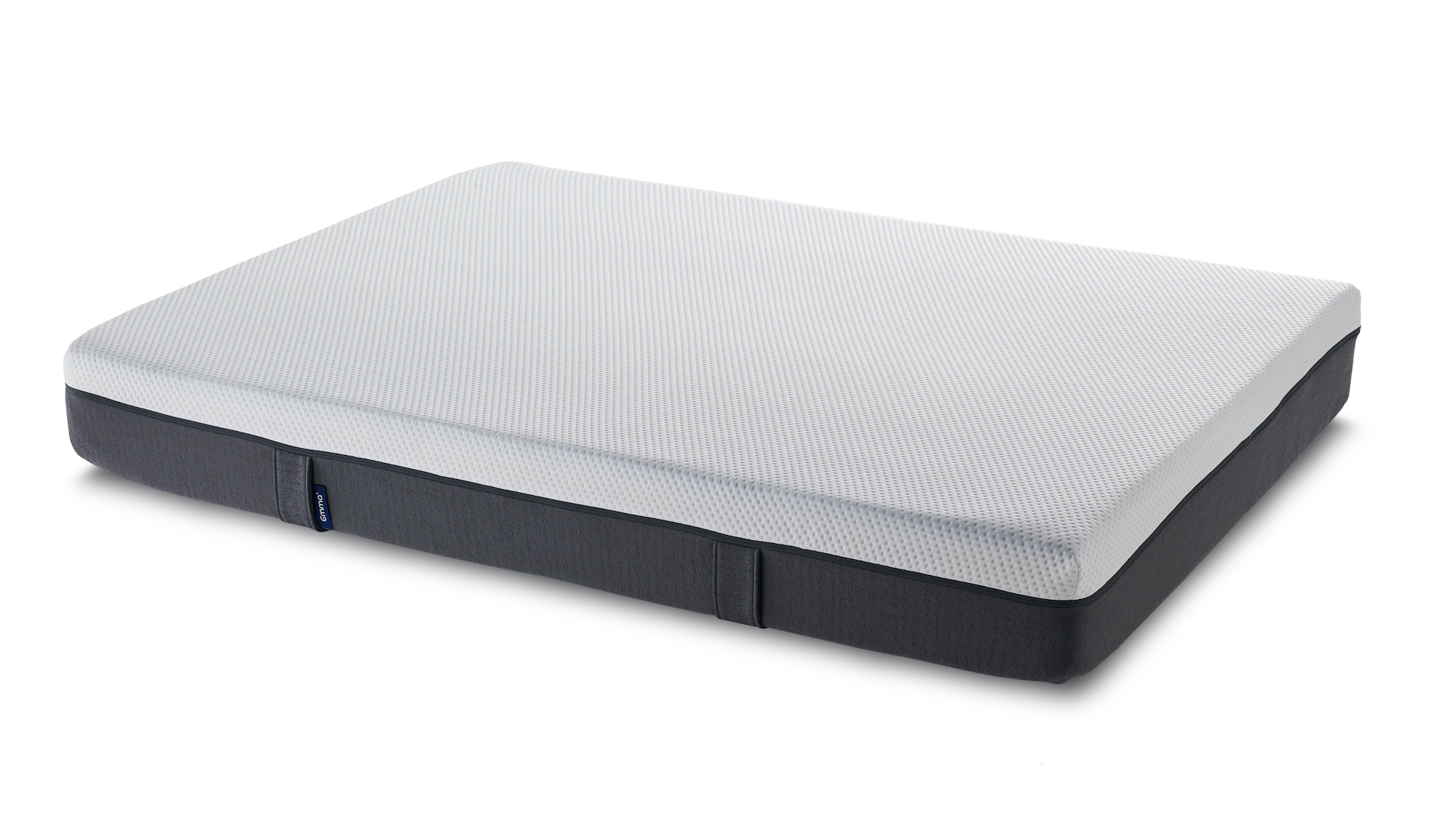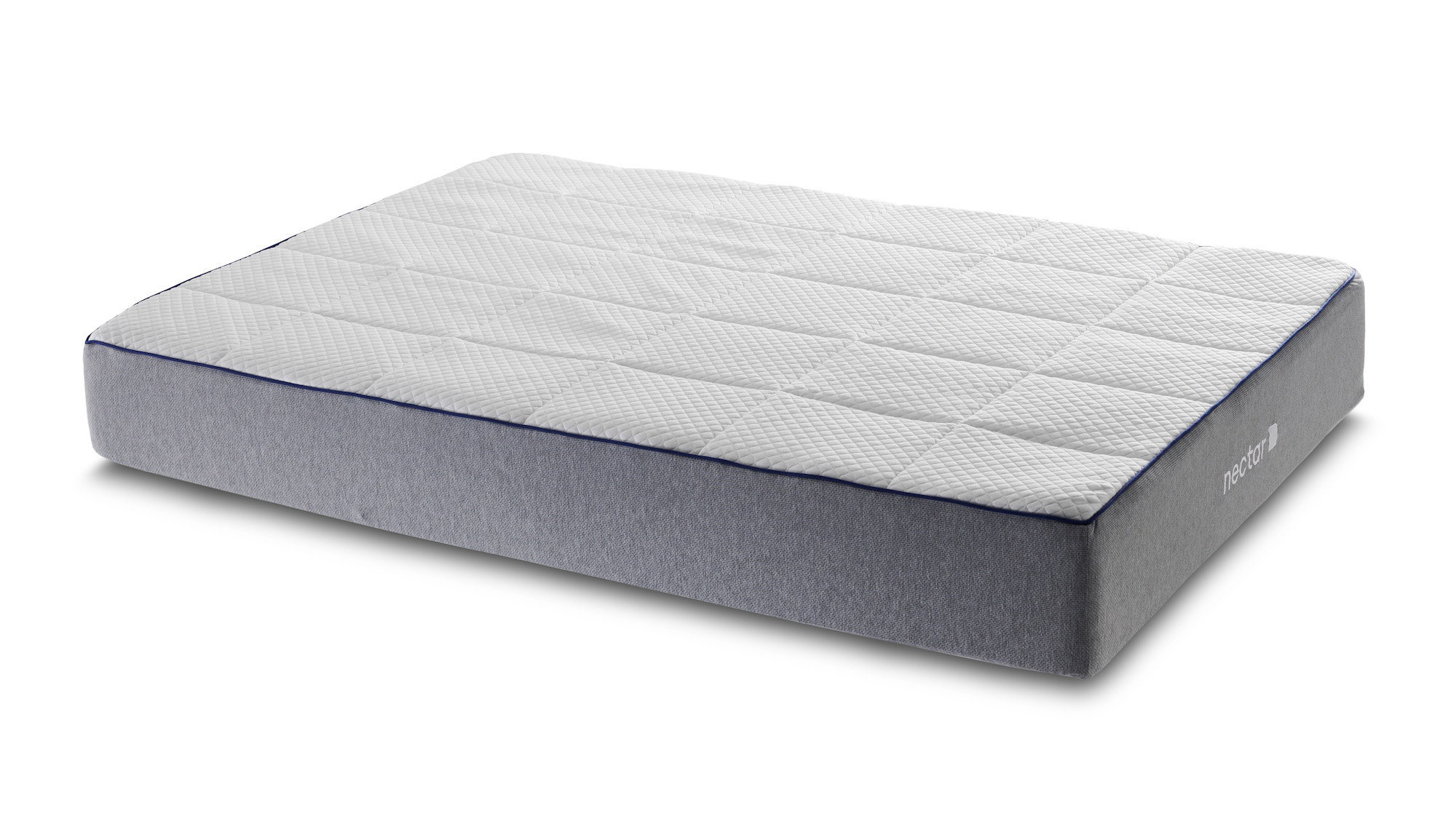
Buying a new mattress, be it foam or spring, shouldn't be a capricious purchase. There is a lot to consider if you want to get quality sleep — which position do you sleep in? How much do you weigh? Do you sleep hot? Do you sleep alone or with a partner? Understanding what your mattress is made from will help you ace your sleep routine.
Before modern hybrid and memory foam mattresses hit the market, the best mattresses were made from innerspring structures. While each type has its pros and cons, different mattresses will suit different people.
In our foam vs spring mattress head-to-head, we look at their materials, design, prices and benefits to help you choose the right one for you and your sleep needs. Plus we've tracked this year's Black Friday mattress deals to help you find the best bargains.
Foam vs spring mattress: What is a foam mattress?
- Foam mattress are made from memory foam, poly foam, or latex
- They provide excellent pressure relief
- They can be more expensive than spring mattresses
Foam mattresses are a fairly recent invention and are made using materials such as memory foam, poly foam, or latex foam, which can vary widely in quality, price and feel. Foam mattresses can use one type of foam or comprise several different blends or layers with each delivering different qualities.
For instance, a more durable high-density foam might be used for the base of a mattress to provide a stable foundation, while a softer foam will provide a cozier, more breathable surface at the top layer. Many of the best mattresses in a box use memory foam, and all-foam models typically have the following qualities:

Supportive – Foam contours to your body to support or ‘cradle’ it holding your posture in the best position for sleep. If you are a side-sleeper then a foam mattress can also be more comfortable.
Responsive – If you apply pressure to foam it bounces back pretty quickly, this is ideal for keeping motion transfer to a minimum, important if you share a bed with a restless partner.
Cozy – Foam is excellent at cushioning pressure points and delivering coziness, without compromising on stability.
Foam vs spring mattress: What is a spring mattress?
- Spring mattresses are firmer, making them a good choice for heavier body weights
- They tend to provide plenty of cooling for hot sleepers
- They are often the more affordable of the two
Although spring mattresses have been around for decades, they have come a long way in recent years — thankfully gone are the days of squeaky bedsprings.
These mattresses are constructed using metal coils or springs of various lengths and thickness. The design of spring mattresses ranges from rows of uniform spirals to hourglass-shaped coils. Some springs are interlocked to provide a stable surface, while others are individually pocketed within thin fabric to offer a more responsive surface to sleep on.
The springs in a mattress form the main support layer, which then have a thin fabric or foam layer on top so it is more comfortable for the sleeper to lie on. Hybrid mattresses combine springs with foam more equally, and deliver the stability of a spring base with the comfort of a thicker foam layer. Overall, spring mattresses are:
Breathable – Because of the open construction of springs, there is good airflow throughout the mattress, making it more breathable and ideal if you sleep hot.
Supportive – Spring mattresses can offer firmer support with less give, ideal if you need a stable surface or have a heavier body weight.
Affordable – Spring mattresses are generally more affordable, as the manufacturing and materials are cheaper. However, the quality and support are often reflected in the price.
Foam vs spring mattress: Key differences
- Foam mattresses are better at preventing motion transfer
- Spring mattresses are normally more cooling
- Hybrids offer the combined benefits of foam and spring

While the feel of a mattress is often down to personal choice, it’s worth considering the good and bad points of spring vs foam mattresses, as you might find it makes all the difference to your comfort. Here are some ways in which spring vs foam mattresses can differ:
Motion transfer – When it comes to keeping motion to a minimum, then foam is the smarter choice. Traditional spring mattresses with interconnected coils tend to be less stable when sleepers are moving around, although individually pocketed coils are better at reducing motion transfer. If you or your partner are particularly restless, then memory foam will isolate movement the best.
Heat distribution – Innerspring mattresses can help if you sleep hot and need a mattress with good airflow, as the open coil construction keeps things cool. However, many foam mattresses now also come with cooling gel technology, as well as more breathable layers, but generally spring mattresses tend to be a better fit if you struggle with your temperature. For more guidance, read our best cooling mattress guide.
Pressure relief – Memory foam is excellent if you are after superior pressure relief, offering the sleeper a cozy surface to sleep on with cushioning at the shoulders, hips and knees. Spring mattresses can be more uncomfortable, especially if you sleep on your side and the pressure points dig in.
Toxicity – Many foam mattresses are prone to what is known as off-gassing. This is when they release compounds, gases and chemicals into the air, often accompanied by a smell that can last a few days after unpacking a new foam mattress.
Look for foam mattresses that are non-toxic or low VOC (volatile organic compound), as these will generally be safer to sleep on without the unpleasant effects of chemicals in the air.
Alternatively, take a look at our best organic mattress guide for beds made with natural and certified organic materials.
Extra support – Spring mattresses are generally firmer, and can be better suited to heavier body weights too. There are firmer foam mattresses available if you prefer the feel of them, but foam tends to be more ‘huggy’ and conforming than springs.
Foam vs spring mattress: Sleeping positions
- Side sleepers are often comfier on foam beds
- Front sleepers are better supported by spring mattresses
- Back and combination sleepers benefit from either
Staying comfortable in your preferred sleeping position is essential if you want to get quality sleep. Whichever position you sleep in, it’s important that your posture is properly aligned and that your pressure points are cushioned. But which mattress is best for your position?

Side sleepers – If you mainly sleep on your side, foam mattresses can better support the body, keeping the spine aligned and the pressure points comfortable. The body can sometimes dig into an innerspring mattress and cause discomfort. Hybrid mattresses are a good compromise if you want the support of springs, with the comfort of foam.
Front sleepers – People who sleep on their stomach often find spring mattresses more supportive, as they provide a firmer surface to keep the spine aligned without sinking in and arching the back. However, if you prefer the feel of foam, then firmer mattresses are available or you can add a foam topper.
Back/combo sleepers – If you sleep on your back (or change position), take your pick of foam or springs, depending on what you find most comfortable. Either way, you need to make sure there is enough support for your back, so avoid a mattress that is too soft. Hybrid mattresses are a good choice, as you will get plenty of stability as well as pressure relief.
Foam vs spring mattress: Prices and deals
- Spring mattresses tend to be more affordable
- Foam mattresses can be more expensive
- Hybrids are often pricier than both but last longer
Whether you’re after a budget innerspring mattress or luxury foam option, there’s plenty to choose from, and they are usually at their cheapest at this time of year thanks to Black Friday mattress sales and deals. It’s worth bearing in mind that if a mattress is very cheap, then it might not last as long, so think about spending a little more in order to get better value for money. You could also use one of the best mattress toppers to help it last longer and feel comfier.
Another good tip is to choose a mattress with a decent warranty (read our guide on how do mattress warranties work). While the average spring mattress lasts about five to seven years, foam tends to last a little longer, and hybrids can last the longest, and so this is reflected in the price.

Here’s a quick guide to some of the prices you can expect to pay, with some of our trusted picks among both types:
For the latest mattress sales from the biggest brands, see the following guides:
- Our guide to the Tempur-Pedic mattress sales and deals
- Go organic for less with the Avocado mattress sale
- Nectar mattress sale: the best discounts to shop
- The best Casper mattress sales and deals
Foam vs spring mattress: Which should you buy?
When it comes to foam vs spring mattresses, both have their merits. It pays to look at your budget, sleeping position and any factors such as if you require extra cooling or minimal motion transfer. Here's our top tips:
Buy a foam mattress if...
✅You need pressure relief: Side sleeper, anyone suffering joint pain or general light weight sleepers will know the value of cushioning on pressure points like the shoulders and hips, which foam mattresses provided in ample amounts.
✅You want a more luxury feel: As a softer, more cushioning material memory foam feels plusher, cozier and costs more than springs.
✅You have a restless partner: Foam is a less bouncy materials and therefore absorbs motion more efficiently than springs, meaning you're less likely to feel your partner tossing and turning next to you.
Buy a spring mattress if:
✅You prefer a firm sleep surface: Heavy weight bodies and anyone who sleeps on their stomach will benefit from the support a firm mattress offers, ensuring you don't sink in too much.
✅You're on a tight budget: Foam is a more luxury material in mattresses which means it comes with a higher price tag, whereas spring mattresses are more affordable.
✅You're a hot sleeper: Spring mattresses allow more airflow to maintain a cooler sleep surface — a blessing for anyone battling night sweats or hot flushes.
Ultimately, choosing a bed with a generous sleep trial is an excellent way to see for yourself whether a new foam or a spring mattress is for you, especially if you’re thinking about making the switch from one type to the other. Or, if you really can’t decide, consider a hybrid mattress as these marry the benefits of both.







